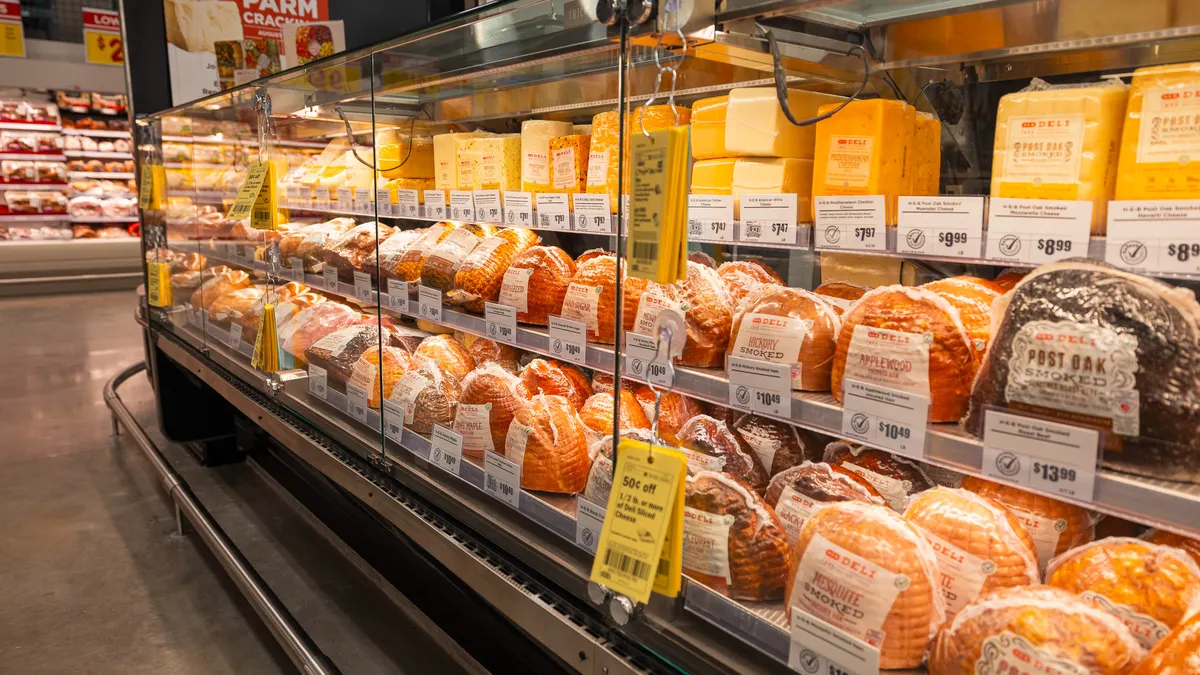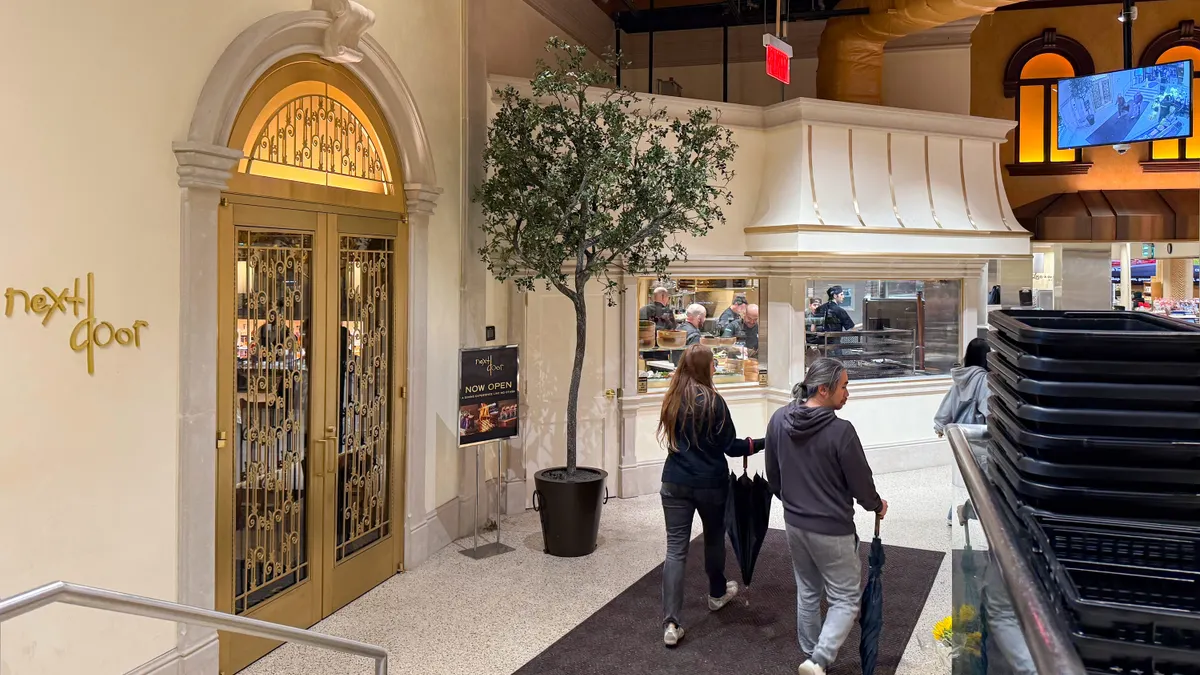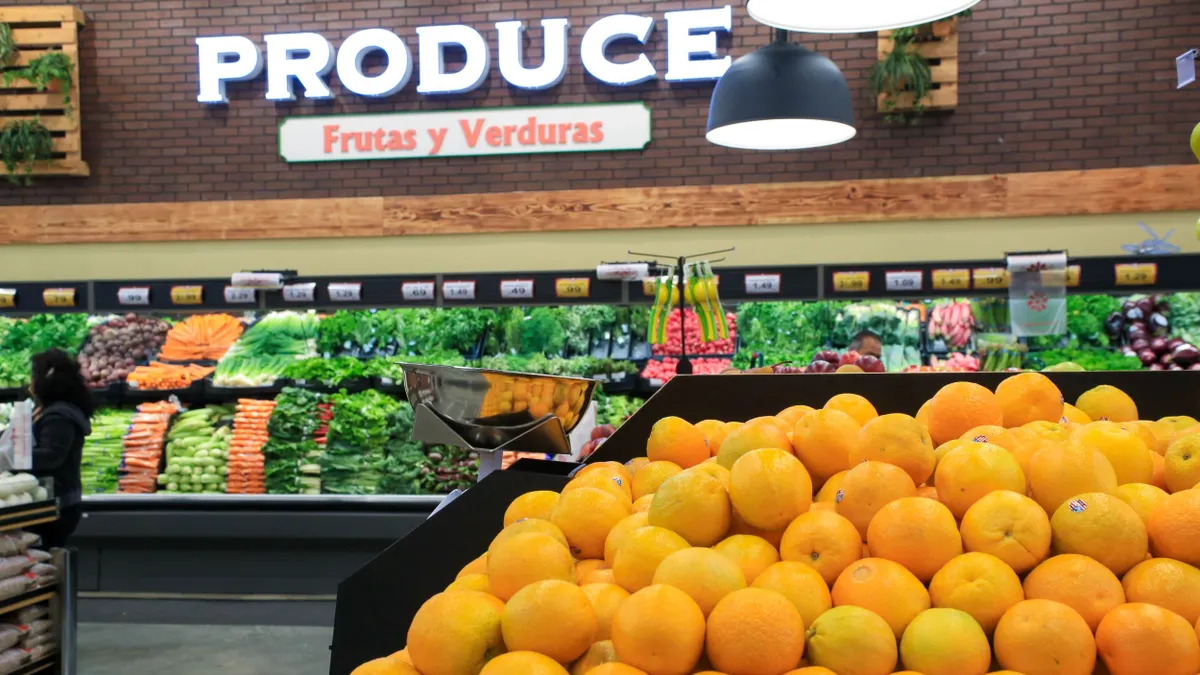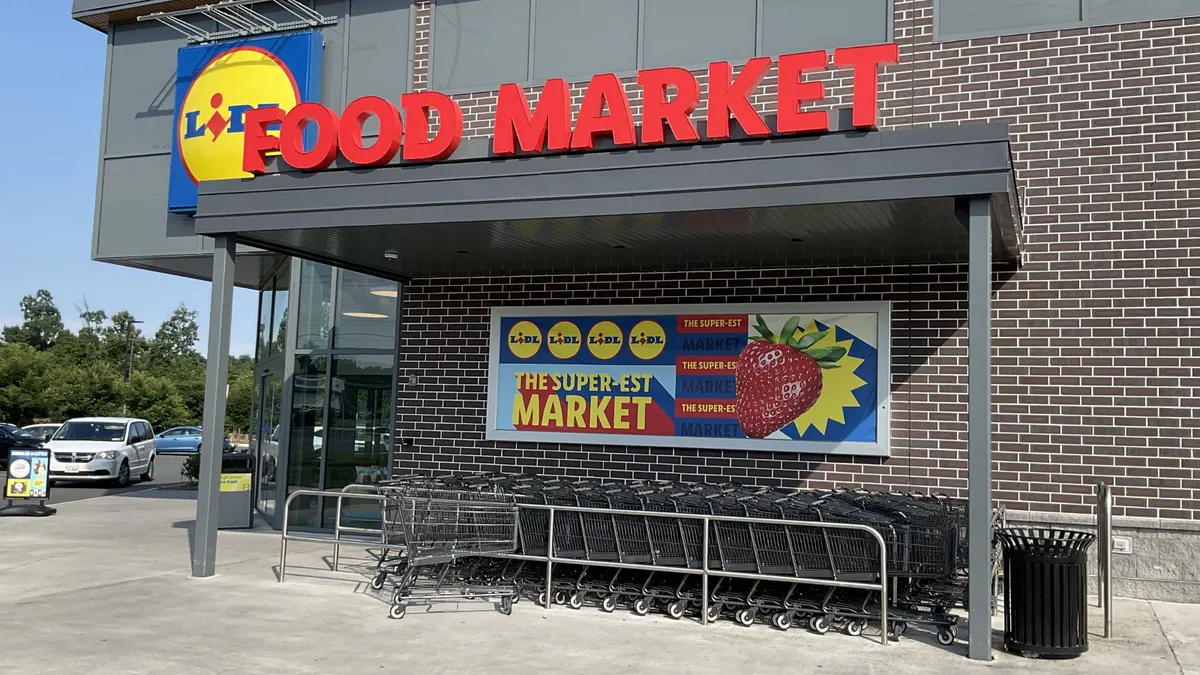Aisles Abroad is a regular feature that examines notable grocery initiatives outside the U.S.
From an in-store “root cellar” to a smokehouse restaurant, Canadian grocer Freson Bros. offers an array of in-store experiential zones celebrating the craft of preparing food with an emphasis on family values and recipes.
The Root Cellar, for example, is a chilled nook in the produce department for items that people would normally keep in a root cellar. A section called Granny’s Wisdom features natural health preventatives. At the Baker’s Pantry, shoppers can find cookware, bakeware and utensils like spatulas and muffin trays.
There’s also an array of food stations, including Father Dough Pizza, and dine-in or take-out options at the Butcher’s Cookhouse, which serves up products smoked in-house with real hardwood.
Some zones, such as Mother Dough Bread Co, are available at all of the second-generation controlled grocery chain’s 16 stores across Alberta. Others are in a handful or most of the locations, depending on when the store was built or retrofitted, Freson’s President Doug Lovsin said in an interview.
Each zone carries its own story that links back to the history of Freson Bros. — like Banj’s Smokehouse, which is named after “a real Uncle Banj.”
The zones and their designs stem from Freson’s iterative work with Shook Kelley. The design firm created a prototype store for the grocery chain in Stony Plain in 2013, followed by another prototype in Fort Saskatchewan in 2018 and then a “newer, more urban offering” in Edmonton in 2021. The success of the Edmonton store in a city with a diverse population proved that the experiential grocery store can move into different markets, architect Kevin Kelley said.
Freson’s experiential zone concept is one that Kelley calls “one of the great unsung concepts” that the rest of North America should know about.
Tapping into values
The Canadian grocer’s roots go back to 1955 when Frank Lovsin opened a butcher shop with Frank Resek and his father, Leo Resek. “Freson” comes from the letters in their names initially combined to create “Fresin” but that was altered to “Freson” due to a banker misspelling the name on documents.
The butchery business evolved into a grocery chain that is now run, in part, by Frank Lovsin’s three sons.
Kelley said he gleaned inspiration for the experiential zones at Freson from family photos showing the art and skill of butchery and of the root cellar, which have played an important role in helping people eat during Canada’s long winters. Kelley encouraged the business to emphasize its Canadian and Eastern European heritage.
To tap into that heritage and authenticity, Lovsin said the grocery chain uses many heritage recipes. For the holidays, for example, Freson is spotlighting on its website Granny Lovsin’s Christmas Cake — a traditional fruit cake that ties back to Burgenland, Austria.
“One of the things that our parents and our grandparents taught us is the value of food and the meaning of gathering and food traditions. ... Our grandparents came from Eastern Europe and they worked the land and they never wasted anything. And the meal and the home was at the center of the family,” Lovsin said.
In the meat department, customers can find heritage meat cuts, such as cross rib roasts, porterhouse steak and bone-in sirloin steak, as well as soup bones and shank bones, Lovsin said.
“Very few food chains in North America have celebrated the meat heritage like we still have,” Lovsin said, noting the company’s meat departments in its stores have a dry age hanging beef program.
Continuing the Freson butchery legacy, the grocery chain offers custom orders of Alberta dry-aged carcass beef with options including whole, half, quarter, loin and hip cuts. The grocery chain taps into Alberta’s livestock production by selling beef, pork, chicken and turkey raised on farms in the province. Freson also exclusively sells sausages made in-store by sausage-makers.
“We're proud Western Canadians and our Western Canadian culture is ranching and farming and hard-working people who settled the land,” Lovsin said.
Freson is bringing back “Old World” food preparation as it celebrates family traditions and Canadian culture, Kelley said.
Have you tried the delicious sourdough pizza from the Fort Saskatchewan, @FresonBros? Post a photo with your pizza, tag us, and use the hashtag #HaveAPizzaThis. We can't wait to see your pizza creation! pic.twitter.com/9RMqH3XUaz
— Freson Bros. (@FresonBros) November 7, 2018
Creating experiential shopping
The shopping zones at Freson use nooks, displays and stations — design elements that Kelley has said can help slow down shoppers’ trips and encourage them to deviate from their typical walking patterns. Getting shoppers to move circularly and go over an area twice or more can help boost basket size and spark curiosity, he told Grocery Dive earlier this year.
Pops of vibrant colors and art like a giant hen silhouette at the Butcher’s Cookhouse and vegetable illustrations throughout the Market Garden produce department create a visually stimulating shopping experience. In Freson’s candy section, called The Sweet Spot, stripes, gingham and barrels lend an old time-y feel.
Freson wants to tap into people’s emotions with authenticity packaged in family heritage, Lovsin said. The Root Cellar, for one, is a nostalgic concept for shoppers, he said, noting that houses built before 1960 typically had them. “We've had so many people come in here tell stories about their grandparents’ root cellars,” Lovsin said.
But the Root Cellar isn’t just for show. It also serves a functional purpose by storing root vegetables at a lower temperature, in lower light and at a consistent humidity to help keep them fresher for longer.
With its baking and cooking paraphernalia, the Baker’s Pantry ties into Canada’s long winter season during which baking is a major activity for consumers: “When you have cool temperatures five months of the year, turning your oven on and making or baking cookies or muffins or cakes is, I think, a big part of our Canadian food culture,” Lovsin said.
That zone was a controversial one initially, Kelley said. “The prevailing argument prior to that was, ‘Oh, you can buy that stuff cheaper on Amazon.’ And so it just assumed that all the customer wants is cheap. But we contended our theory on the market was: No, they want ideas. They want inspiration,” he said.
The section became a “massive success,” which Kelley attributes, in part, to customers’ desire to explore.
The Canadian grocer’s emphasis on an authentic “foodie” experience is one that regional grocers in the U.S. can copy to create a competitive advantage as national grocery chains and brands take a commodity approach, Kelley said.
Northgate González Market’s newly opened Mercado concept in Costa Mesa, California, which Shook Kelley designed, also taps into consumer desires for authentic cuisine with an abundance of food stalls and a fine-dining restaurant. Meanwhile, Food Lion’s walk-in produce coolers provide a differentiated experience in the produce section that’s similar to the Root Cellar.
The work Freson and Shook Kelley did on the experiential offerings, Kelley said, all ties back to the tagline they developed: “Handle with care.”
“What we didn't realize was how much it was going to remind [customers] of possibly the meals that they shared at home with their parents or their grandparents and remind them of something that maybe felt that they've lost somewhere,” Lovsin said.






















